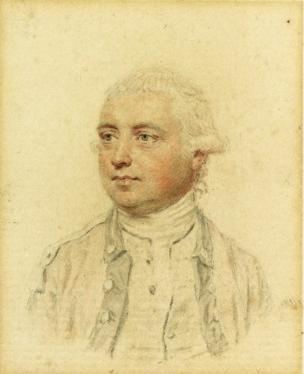Died January 16, 1798 | Name John Dalling Rank General officer | |
 | ||
Battles/wars Seven Years' WarAmerican War of Independence Battles and wars | ||
General Sir John Dalling, 1st Baronet (c. 1731 – 16 January 1798) was a British soldier and colonial administrator.
Contents
Military career
Dalling was the son of John Dalling (1697-1744), of Bungay, Suffolk, by his wife Catherine (-1738), a daughter of Colonel William Windham (1673-1730), of Earsham, or Ersham, Norfolk (bought circa 1720, with South Sea bubble profits), MP. Colonel Windham was the second son of William Windham I, of Felbrigg Hall, and a first cousin of Lord Townshend, both being grandsons of Sir Joseph Ashe, 1st Baronet. Colonel Windham's grandson, Joseph Windham of Earsham (1739–1810), died in 1810 at which point Dalling's heirs inherited that estate.
He served with the British forces under James Wolfe that participated in the Gulf of St. Lawrence Campaign (1758) and captured Quebec from France in 1759. Dalling was Governor of Jamaica from 1777 to 1782 and commander-in-chief of the forces in Madras (Fort St. George), from 1784 to 1786. He was made a colonel of the 60th Foot in 1776 and, having been promoted to lieutenant-general in the army in 1782, he became colonel in the 37th Foot in 1783. Promoted to full general in 1796, he was created a baronet of Burwood in the County of Surrey on 11 March 1783.
Family
Dalling married firstly, Elizabeth (1747-6.7.1768), daughter of Philip Pinnock (1720-?), of St. Andrew's, Jamaica, by Grace Dawkins/Dakins (1729-14.8.1771). Pinnock was sometime Speaker of the Jamaican House of Assembly in Kingston, his grandfather having been a Quaker from Reading who had emigrated to Barbadoes before 1658. Elizabeth Dalling and their daughter Elizabeth Windham Dalling (1763-1.5.1768) died within nine weeks of each other. In 1770 Dalling remarried Louisa, (died 1824), daughter of Excelles Lawford, of Burwood, Surrey. Their eldest surviving son Sir William Windham Dalling, 2nd Baronet, of Earsham, Norfolk (inherited 1810), and 17 Lower Berkeley Street, Mayfair, died in 1864, aged 89, having been High Sheriff of Norfolk in 1819 and been awarded compensation as owner of the Donnington Castle sugar estate, in parish of St. Mary, Jamaica, which in its day had brought an annual income of £5,000 to £6,000, in the 1830s.
The general's daughter and eventual heir, Anne Louise Dalling (d.1853), married, in 1808, the general the hon. Robert Meade, of Burrenwood and Rathfriland, younger son of Theodosia, Countess of Clanwilliam.
Dalling's Vizagaptam Cabinets
The Dalling Cabinets, a pair of Anglo-Indian Vizagapatam ivory bureau cabinets, circa 1786, on ebonised and parcel gilt stands, c1810, were made for Dalling near Madras and brought home to Britain. Each is inlaid overall with panels depicting buildings, trees and flowers, surrounded by borders of scrolling foliage, with triangular open pediment above a frieze drawer and three pigeon-holes and three drawers flanked by doors enclosing two pigeon-holes and three drawers, above a hinged flap enclosing a fitted interior of pigeon-holes and drawers divided by column-drawers, above a long drawer fitted with divisions, on bracket feet, the interior and carcase in satinwood, on a rounded rectangular stand with solid three-quarter gallery above a reeded frieze, on spirally-fluted tapering legs and ring-turned tapering feet, minor variations in size and decoration, the pediment now positioned at the rear edge. These engraved bureau-cabinets, serving as portable desk jewel-case and dressing-box, are designed as a miniature 'desk and bookcase' with Roman-temple pediment. Engraved tablets, wreathed by floral 'chintz' fashioned borders, portray magnificent villa landscapes. This artistic India-flowered furniture, crafted in ivory veneer, was retailed in Madras and Calcutta by the English and Dutch East India Companies; but it was primarily manufactured in Vizagapatam, on the northern Coromandel Coast. Two other related cabinets, from the estate of Alexander Wynch, a former East India Company Governor of Fort St. George, were acquired in the 1770s by George III. They measure: (overall) 57¼ inches high; 26½ inches wide; and 13½ inches deep. The cabinets are 36¾ inches high; 25 inches wide; and 11¾ inches deep. The English stands are 20½ inches high.
